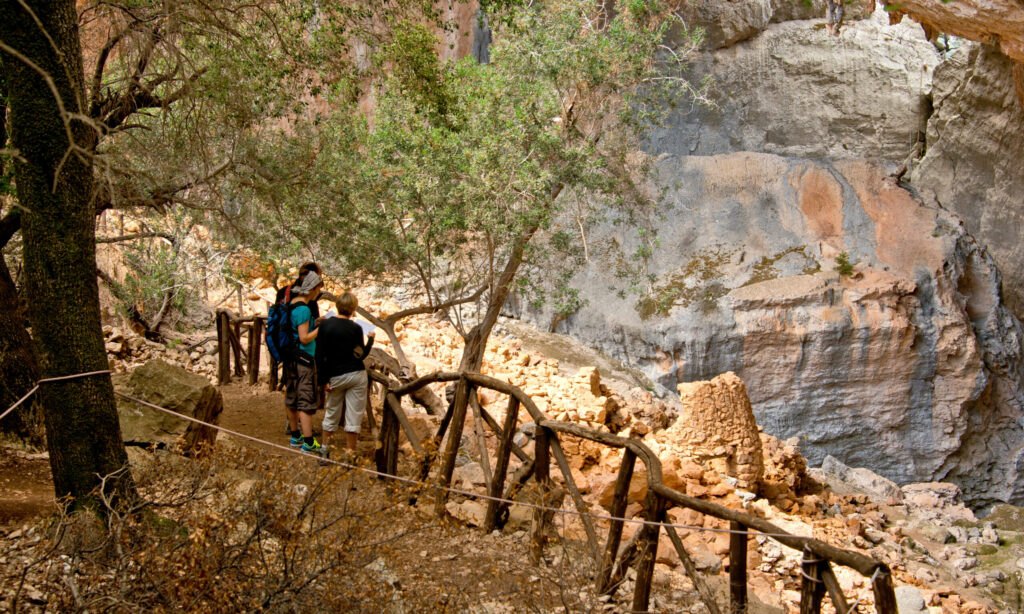The famous nuraghi
of Sardinia
The more than 7,000 cone-shaped fortress towers made of roughly stacked stone blocks have been a significant part of the Sardinian landscape for thousands of years. The interior was completely shielded from the outside world and only loopholes and very narrow passages lead through the metre-thick walls to the outside.
The Nuraghic culture in Sardinia
From about 1800 – 300 BC, the militant pastoral culture of the Nuraghians gained a foothold in Sardinia. It is still unclear whether these were immigrants from the western Mediterranean who brought new impulses, or whether the islanders themselves changed their way of life. The most obvious feature of this civilisation is the bizarre nuraghi (“nurakes” means piles of stones), which can still be seen as moss-covered monstrosities scattered all over Sardinia.
It is not clear whether the towers served as cult sites or military buildings, but most archaeologists prefer the latter variant. In the meantime, more than 7,000 nuraghi have been counted in Sardinia, and it is assumed that there were considerably more. From this, it is calculated that each tower could control an area of about 1 km on each side on average. It is unlikely that such a system was used to keep out external enemies. It seems that the 1,000 or so clans on the island had to separate themselves from each other and guard their land suspiciously.
The most important nuraghi in Sardinia
The largest and best-preserved nuraghe complex is the impressive “Su Nuraxi” fortress near Barumini.
It is enthroned with a total of 12 towers and a double ring of walls on a low hill and the wall remains of about 150 round huts surround it. The former village offers an excellent insight into the everyday life of the Nuraghians. The complex has been a UNESCO World Heritage Site since 1997.
Another impressive nuraghe complex is “Santu Antine” near Torralba in the Logudoro plain in the province of Sassari. The gigantic complex is also known as the “King’s Nuraghe”. Construction began in the 13th/12th century BC from the basalt blocks of the surrounding table mountains. The mighty central tower was built first, and the corner towers and the triangular wall surrounding it were built about 300 years later.
The extensively restored nuraghe “Arrubiu” near Orroli in the province of Sud Sardegna consists of a 16m high central tower, a bastion with five towers and a strong circular wall. During excavations, it was discovered that the complex was still inhabited in Roman times. Around Orroli there are other nuraghi worth seeing, such as Gurti Acqua, Peppo Gallu and Su Putzu.
Contact us to plan
your event or trip in Italy
Contact us now for a free consultation to plan an extraordinary experience for you and your guests!







